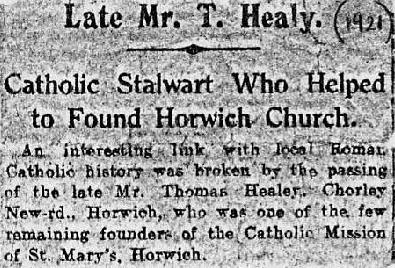The continuing story of the house Joe and Mary Ann Scott lived in for over 50 years and the families that have lived here since.*
I have been thinking about our kitchen or more accurately of the kitchens of some of our neighbours because we are not alone. There are in total six houses in the terrace that Joe Scot built just under a hundred years ago and as you would expect each of the six has been altered at some time or other.
Over the course of the last 38 years ours had had its fair share of being knocked about, some of which worked better than others. I shudder now at the wholesale lack of thought that led to John ripping out the fireplaces, picture rails and old copper in the cellar and remain amused at some of our own attempts to restore the place ranging from installing an Edwardian cast iron bath, old wooden lavatory system and a set of picture rails which Norman the builder put in upside down.
Which brings me to the kitchen. There is a lot of tosh talked about modern kitchens of which the idea that it is the heart of the house is one of them. Now I have always liked the idea of a big room where the family could sit and talk while food was being prepared thereby making it a focal point for the family. But I just don’t see it.
We have long since moved away from the idea of communal living. We don’t all sleep in the same room and have chosen to separate chores like washing the clothes from relaxing with some leisure time, and so I am not convinced that the big all in one multi-purpose kitchen works.
I do have to confess once liking the idea of the all in one room and bought a place on the strength of it having had the front and back room knocked through, which looked good but pushed up the heating bills and gave you little privacy.
And that on reflection is pretty much why now I am pleased I didn’t knock our two big rooms together, or go for a sideways move and combine the kitchen with the dining room.
As our children have grown up, left home and returned there is a real advantage in separate rooms allowing them to have the privacy and comfort to do what they want in one downstairs room and for us to do the same in another. Those golden days when the family all sat around the telly watching the same TV programmes are gone and from memory were pretty much a recipe for the grownups to determine the nights entertainment and get the prime chairs and for us kids to watch repeats of This Is Your Life, Gardening in Antwerp and sit on scatter cushions on the floor.

And this I think is very much the case with the kitchen. Ours is small, sits at the side of the house was designed to be a place to cook and store food and apart from the odd snatched meal was not where you ate, that took place in another room as befitted a house which in every respect was a step up from the small two up two down properties which Joe had built during the early decades of the 20th century. These had very tiny kitchens which were really just an add on at the back of the house and led into the main backroom which was the main living area.
But ours was different. It was larger with an eye to the new consumer goods which were beginning to come on to the market and offered Mary Ann the flexibility of eating away from the steam and smell of cooking in a fine room overlooking the garden.
Now we have dabbled with our kitchen, re positioning the sink and cooker and are now on to the third set of units. I have to admit we were a little excessive with power points. There are twenty around the kitchen. Some languish abandoned after the latest redesign but most are used and on a busy day with the kettle, toaster and microwave in use, plus the radio and a lap top the over abundant provision seems less so. Indeed with another taken up by the fridge freezer this leaves just nine to power the steamer, blender and food processor, along with other electronic kitchen gadgets which might come into play. So, no double adaptors here.
And that I suppose is the point. I doubt that Mary Ann used many tools which needed electricity. It was and I remember this from the 1950s possible to power some things including an electric iron with an adaptor run from a light fitting. On the other hand there was ample space for when new gadgets came along.
At some point perhaps even as the houses were being built a gas cooker replaced the old range; although the space where the range would have been is still there as is the chimney flue and the properties were supplied with electricity unlike others which had been built less than ten years earlier.
Despite this forward looking approach it remained a separate room and the design of the house works accordingly. It may appear conventional, and basic and perhaps even old fashioned but there is simplicity in the layout of the house. The kitchen faces you as you come in, there are rooms off the main hall and you do not have to go through other rooms to get to it.
It remains a functional and discreet part of the house in the way that Joes intended it to be, and it worked then and I rather think still works today.
Pictures;
The Frankfurt Kitchen, 1926, Wikipedia Commons, advert for the Co-op table wringer 1937 from Graham Gill and the kitchen today from the collection of Andrew Simpson
* http://chorltonhistory.blogspot.co.uk/search/label/The%20story%20of%20a%20house







.jpg)
.jpg)



































